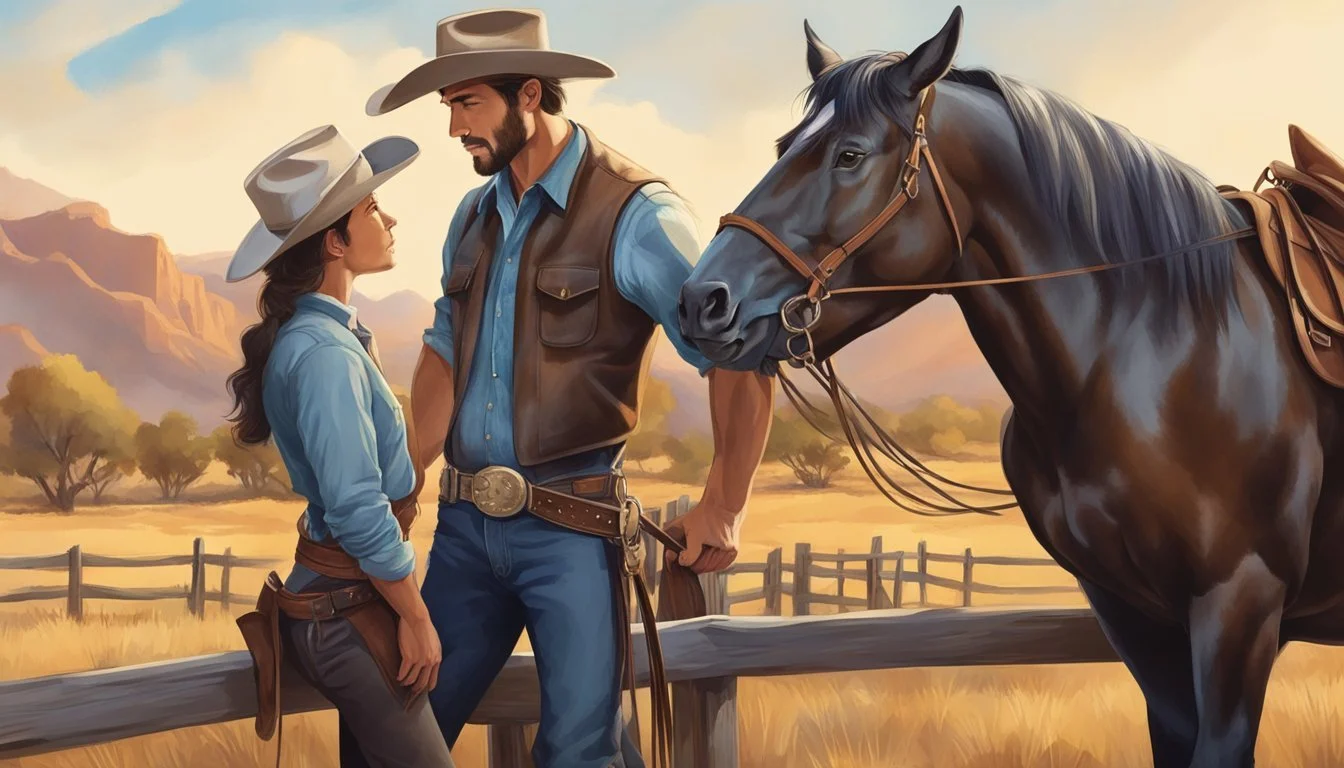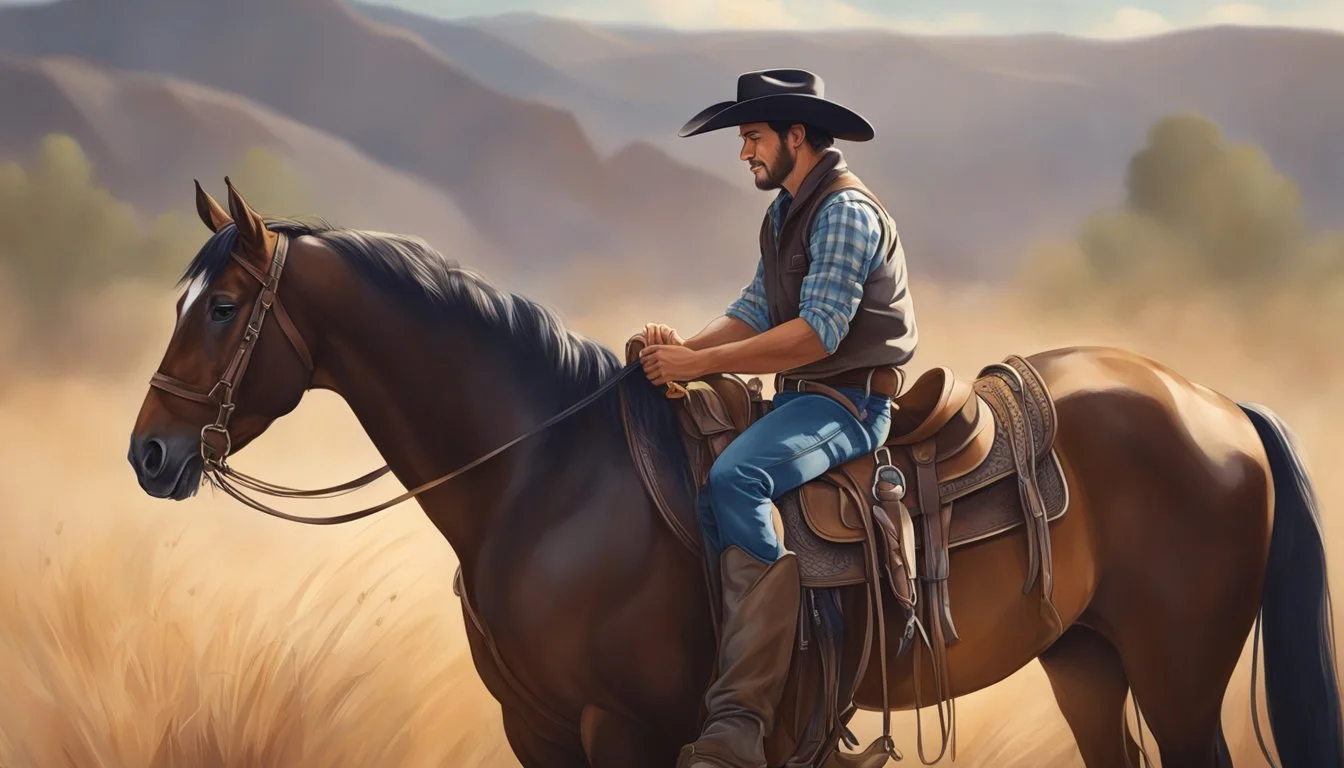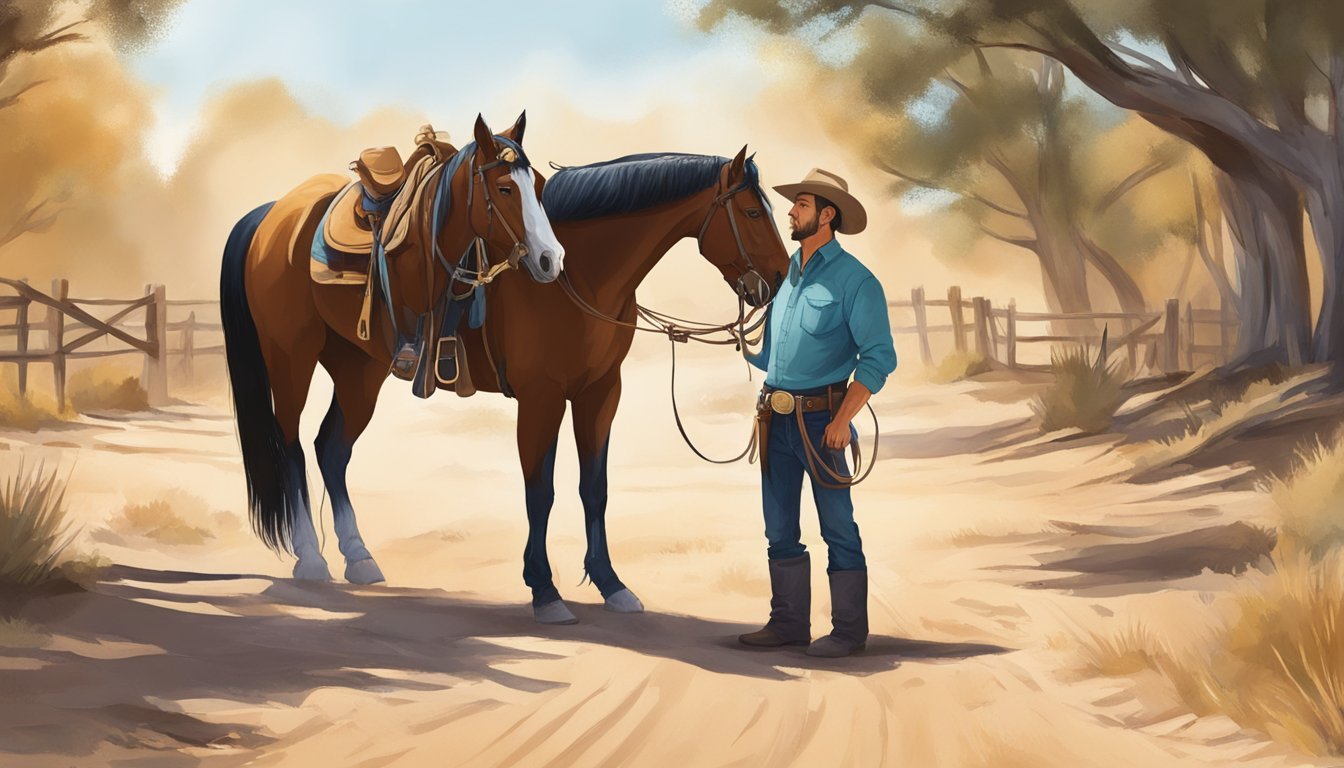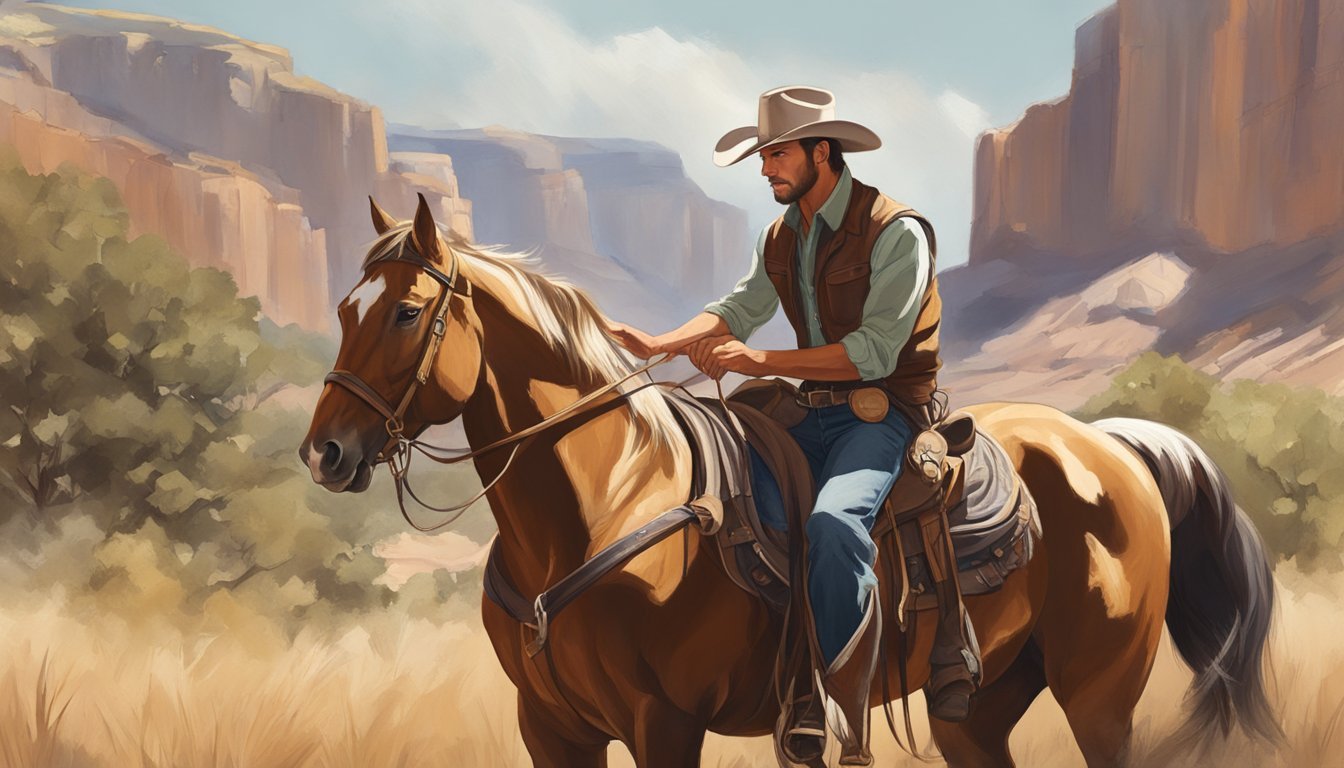The Science of Horse Whispering
Unveiling the Secrets of Equine Communication
Horse whispering is a practice rooted in the centuries-old tradition of understanding and communicating with horses. Far from the mystical undertones its name might suggest, it is grounded in the science of equine behavior and non-verbal communication. Through careful observation of physical cues such as posture, facial expressions, and movements, horse whisperers are able to interpret the feelings and intentions of these animals, paving the way for mutual respect and cooperation.
This methodical approach to training and interacting with horses hinges on the establishment of trust, a process that often replaces force with patience and empathy. By responding to a steed's body language—interpretations of a swishing tail or a pricked ear, for instance—humans can effectively initiate training, correct behaviors, and solidify bonds without the need for spoken commands. The nuanced interplay between horse and human is critical in horse whispering, transforming what might appear as mere horse handling into a deep, cross-species conversation.
The Essence of Horse Whispering
Horse whispering is a refined form of equine communication that is grounded in trust, respect, and the bond between human and horse. This technique stands distinct from traditional horse training methods by emphasizing a partnership that listens to and values the horse's perspective.
Fundamentals of Horse Whispering:
Trust: Essential to any horse-human relationship; built over time through consistent, positive interactions.
Respect: Both parties acknowledge limits and express consideration for one another.
Communication: Non-verbal cues and body language form the core language used.
Bond: A deep connection fostered by mutual understanding and empathy.
Rooted in natural horsemanship, horse whispering promotes a mutual respect that eschews fear-based training in favor of cooperation. Practitioners often observe horse behaviors in the wild to understand natural group dynamics and social structures, integrating these insights into their approach.
Successful horse whisperers adeptly read equine body language, discern subtle cues, and respond with equal subtlety, thus forging a two-way dialogue that fosters a serene and responsive environment. Ultimately, horse whispering transcends mere technique, embodying a philosophy where horses are revered as sentient partners in the dance of communication.
Historical Roots of Horse Whispering
The tradition of horse whispering is deeply rooted in human history, reflecting a longstanding connection between humans and horses. Horse whispering involves a non-verbal method of communicating with and training horses, emphasizing empathy and patience in developing a bond of trust.
Origins can be traced back to ancient times where nomadic communities, such as the indigenous cultures of the American West, honed these techniques. They relied on a deep understanding of wild horses' behavior to work with them harmoniously. It was not simply about training for utility but about cultivating a relationship that respected the horse's autonomy and spirit.
These practices evolved as they were passed down through generations, and the essence of horse whispering became a cultural touchstone within these communities. For them, it was more than horsemanship—it was part of their identity and the way they interacted with the natural world, especially with animals they held in high regard.
The approach varies, but at its core, the methods involve body language, gentle touch, and observation to establish effective communication channels with horses. This contrasts sharply with more coercive training methods, emphasizing mutual respect rather than domination.
While the term horse whispering implies a clandestine and mysterious skill, it signifies a time-honored practice. This wisdom, once exclusive to certain communities, now informs modern equine training disciplines, highlighting a broader appreciation of the intuitive bonds possible between human and horse.
Understanding Equine Behavior
In the realm of equine communication, successful interaction hinges on a comprehensive understanding of horse behavior. Recognizing and interpreting the nuances of equine body language, non-verbal cues, and the influence of past trauma can enhance the connection between humans and horses.
Reading Body Language
Horses communicate primarily through body language. Tail swishing, for instance, can indicate irritation, while ears pinned back might signal aggression or fear. Observing a horse's posture and movements provides insight into its emotional state and intentions. Careful attention to these details allows individuals to respond appropriately and build trust with the animal.
Alert: Ears pricked forward, wide-eyed and focused.
Relaxed: Lowered head, calm tail, ears at ease.
Anxious: Shifting weight, head tossing, increased whinnying.
Hearing the Unheard: Non-Verbal Cues and Signals
Non-verbal communication extends beyond visible gestures to subtler signals like breathing patterns and heart rate. Sensitivity to these indicators is crucial, as horses will respond to a human's non-verbal cues, including tension, posture, and energy level. Accurately interpreting these signals strengthens the non-verbal dialogue between horse and handler.
Respiration: Fast breathing may indicate nervousness or excitement.
Energy Levels: A calm demeanor in humans often translates to a calmer horse.
Assessing the Impact of Trauma
Past trauma can significantly affect a horse's behavior and responses to various situations. Recognizing signs of distress linked to traumatic experiences is essential for establishing a supportive and rehabilitative environment. Behavior such as shying away, biting, or kicking may be rooted in previous negative experiences. Addressing trauma with patience and consistency is key to fostering recovery and positive behavioral change.
Abnormal Reactions: Flinching at touch or overreacting to common stimuli might suggest trauma.
Behavioral Changes: Sudden onset of aggressive or withdrawn behaviors could indicate a trauma response.
Techniques of Communication
In the realm of horse whispering, effective communication is the key to establishing a deep and harmonious connection with the steed. This section delves into the specific methods by which cowboys and trainers convey messages to their horses, focusing on verbal, non-verbal, and the subtler nuances of energy and focus.
Developing Effective Verbal Communication
Verbal cues play an essential role in horse training, with the tone and volume of the trainer's voice often being as important as the words themselves. Soft, reassuring tones can calm a nervous horse, whereas a firmer voice may be necessary to assert authority. Trainers typically use a consistent set of commands to ensure that the horse can associate specific sounds with expected actions.
Key Verbal Techniques:
Use a calm, steady voice to build trust.
Maintain consistency in commands for clarity.
Adjust tone and volume to match the context of the situation.
Harnessing the Power of Non-Verbal Communication
Non-verbal cues make up a significant portion of interaction with horses. Horses are highly perceptive animals and readily respond to the body language and movements of their human handlers. Understanding and using these cues can significantly enhance the communication process.
Equine-Sensitive Non-Verbal Techniques:
Pay attention to posture, as horses read confidence and intent through body stance.
Use deliberate gestures to guide and direct horse behavior.
Recognize and interpret the horse's body language in return.
The Role of Energy and Focus
The energy a trainer exudes and their focus during interactions greatly influence the horse's responsiveness. A consistent, composed presence helps in forming a trusted relationship essential for horse whispering.
Energy and Focus Techniques:
Project calm, assertive energy to establish leadership and trust.
Maintain focus on the horse to foster a connection and discourage unwanted behaviors.
Utilize mindfulness to regulate personal energy levels and remain attuned to the horse's state of mind.
Training Through Whispering
In the realm of horse training, the term "whispering" refers to a nuanced form of communication and a progression of techniques favoring gentleness and understanding. It hinges on the cultivation of trust and a responsive relationship between a horse and its trainer.
Building Trust with Each Gesture
Trust is the cornerstone of the horse whispering methodology. Each gesture made by a trainer is a carefully considered communication, serving as a building block in establishing a secure bond. Subtle cues such as a calm demeanor or a patient approach can convey safety and respect to the horse, encouraging it to relax and be receptive.
From Groundwork to Riding: Progressive Training Techniques
Successful horse whispering integrates a sequence of progressive training techniques, molded to the individual horse's pace. Initial groundwork — encompassing activities like leading, lunging, and yielding — lays a foundation for rapport and mutual understanding. As the horse shows readiness, training transitions include:
Mounting: Acclimating the horse to the presence of a rider.
Basic commands: Communicating through leg pressures, rein movements, and body language to direct movement.
Refinement: Fine-tuning responses to foster precision in performance.
The Significance of Consistent Responses
Consistency in responses from both the horse and the trainer is pivotal for effective communication. Predictable and reliable reactions to commands foster an environment of understanding. As the horse learns that specific actions yield certain responses, it reinforces the training, solidifies the communication channel, and enhances the effectiveness of the training techniques.
The Horse Whisperer as Psychologist
A horse whisperer can be likened to a psychologist, utilizing empathy and deep understanding to communicate and resolve behavioral issues in horses. These individuals adopt a perspective that prioritizes the emotional and mental state of the horse, aligning with the roles typically undertaken by human psychologists.
Empathetic Approach: They keenly observe equine body language and respond with sensitivity, fostering a calm and trusting environment.
Behavioral Insight: Like a psychologist, a horse whisperer interprets behavior as an expression of underlying needs or emotions.
Non-verbal Communication: Much of their interaction relies on understanding the subtleties of non-verbal cues, similar to a therapist attuned to human body language.
Their techniques often involve:
Patience and consistent presence
Calm and assertive demeanor
Positive reinforcement to encourage desired behaviors
The efficacy of a horse whisperer draws from a profound grasp of equine psychology and behavior, allowing them to address issues from a position of knowledge and confidence. They work with the horse to understand the root causes of actions, rather than imposing dominance. This neutral yet perceptive stance enables them to build a bond of mutual respect with the horse, leading to long-term positive outcomes.
Bridging the Gap: Human-Horse Connection
The science of horse whispering reveals how cowboys and riders create a distinct bond with their steeds. This partnership is founded on mutual respect and effective communication. The cornerstone lies in understanding the nuanced language horses use, which involves body language, sounds, and reactions. It is less about literal whispering and more about sensitive observation and response.
Developing a connection with horses incorporates both empathy and patience. Riders must learn to interpret the subtle cues horses provide, such as ear movements, snorts, and footing. This non-verbal communication establishes trust and fosters a collaborative environment where horse and rider work in unison.
Trust and respect go both ways; a horse learns to interpret human cues just as a rider learns to understand equine signals.
Consistency in behavior and commands from the rider helps in building a reliable relationship.
Body Language is a key factor in horse whispering:
A relaxed posture and gentle approach signal safety to the horse.
Firm yet careful guidance teaches the horse to follow directions without fear.
The approach to horse whispering does not happen overnight. Riders cultivate it day by day, transforming their interactions into a conversation rooted in respect and attentiveness. When done correctly, the phenomenon transcends mere technique; it becomes an artful dance between human and horse. Through patience and practice, the gap narrows, sculpting a connection that enhances both the cowboy's and the steed's experience.
Applications in Different Riding Disciplines
In various equestrian disciplines, effective communication and trust between rider and horse are pivotal. This section explores how the principles of horse whispering are applied differently in dressage, show jumping, and western riding.
Dressage: The Dance of Communication
In dressage, riders and horses partake in a precise routine, resembling a dance, where subtlety and finesse in communication are paramount. Dressage requires a synchrony that comes from a deepened mutual understanding, honed through body language and minimal cues invisible to the untrained eye. Riders use horse whispering techniques to cultivate this bond, ensuring that their horses are responsive to the lightest touch or shift in weight.
Show Jumping: A Test of Trust and Connection
Show jumping tests the partnership's courage, with horse whispering playing a crucial role in building the trust necessary for horses to leap over substantial obstacles. In training, whisperers establish a rapport through consistent, gentle communication, forming a connection that translates into the horse's confidence on the course. Riders depend on their horses to interpret signals promptly, which can make the difference between a clear round and a refusal.
Western Riding: A Tradition of Unspoken Bonds
Western riding carries a storied tradition of horsemen and women working closely with equines, often in vast, open spaces where refined, unspoken bonds take center stage. Here, the art of horse whispering is not just a training method but a lifestyle, as riders depend on horses for jobs like cattle herding. They share a mutual trust, engaging in complex tasks that demand prompt and clear communication, often established through horse whispering principles.
Influential Figures in Horse Whispering
Monty Roberts is a pivotal figure in the horse whispering community. Known as the original "Horse Whisperer," Roberts pioneered gentle training methods that transformed how horses are trained. His approach focused on non-violence, earning him respect worldwide. Roberts' methods involve understanding the horse's natural behavior and communication, leading to a bond based on mutual trust rather than fear.
Another influential presence in the field is Tom Dorrance. Dorrance, along with his brother Bill, influenced natural horsemanship with a philosophy centered on empathy and subtle communication.
The horse whispering practice often involves key communicators who bridge the knowledge within the community. These communicators share insights and refined techniques, facilitating a better understanding of equine behavior.
Key Figures Contributions Monty Roberts Developed Join-Up® and non-violent training Tom and Bill Dorrance Advocated 'horse listening' and soft feel Ray Hunt Extended the Dorrance legacy, emphasized on trust
These individuals have provided invaluable insights into equine psychology, greatly influencing training approaches. Their legacy continues to inform and inspire trainers and enthusiasts in the equine community.
The Science Behind Horse Whispering
Horse whispering encompasses a variety of animal communication techniques that facilitate mutual understanding between humans and equines. Fundamental to this practice is the recognition of horses' complex behavior and social structures. Horse whisperers attune themselves to the subtle cues from horses, interpreting their body language, and energy to establish a connection.
The foundation of these techniques rests on the science of equine psychology and behaviorism. A whisperer's art often revolves around:
Observation: Carefully noting the horse's responses such as ear position, eye movement, and tail flicks.
Body Language: Using their own posture and gestures to communicate intentions without inducing fear or aggression.
Pressure and Release: Applying mild pressure to encourage a desired behavior and then releasing it as a reward for compliance.
Positive Reinforcement: Rewarding the horse for calm and cooperative behavior to reinforce these actions.
Traditionally, horse whisperers operate on the principle of leadership rather than dominance, encouraging horses to view them as trusted leaders in a herd-like dynamic. The technique known as "join-up" exemplifies this approach, where the trainer seeks voluntary cooperation rather than submission.
Researchers in equitation science also stress the importance of understanding horses' sensory modalities—vision, hearing, olfaction, taste, and touch—as these deeply influence equine perception and interaction with their environment.
Overall, horse whispering is a profound exercise in patience and empathy, requiring constant learning and fine-tuning of communication methods to foster a symbiotic relationship between cowboy and steed.
Cultural Influence and Gender Perception
The practice of horse whispering, or equine communication, demonstrates significant variation across cultures. Each community brings its own tradition and techniques to the art, reflecting a deep-seated understanding that transcends language. The roots of this practice often stem from ancient methodologies that have been passed down through generations, blending with modern approaches over time.
Across different societies, one might observe that gender perceptions can shape the style and application of horse whispering. For instance, the communication styles between men and women interacting with horses may diverge based on societal norms concerning gender roles. This differentiation is not inherent in the equine response but rather molded by the cultural context surrounding the horse-human interaction.
Gender Perceived Attributes Male Direct, assertive, pragmatic Female Detail-oriented, nurturing, empathetic
While such attributes are stereotypes and do not reflect the complexity of individual behaviors, they suggest how community and culture can influence the expectations and interpretation of human-horse communication.
It should be noted that the gender of the handler might also influence a horse’s responsiveness due to differences in communication approaches. Some argue that women may provide more detail in their interactions, which can impact how horses are trained and treated. Nonetheless, success in equine communication hinges on the individual’s ability to establish trust and understanding with the horse, rather than strictly on gender or cultural background.
Privacy and Ethical Considerations in Equine Communication
In the realm of equine communication, respect for the animal's privacy is essential. Trainers and handlers must acknowledge that horses, like humans, need their space and time apart from human interactions. This understanding fosters a trusting and respectful relationship.
Privacy is vital in equine communication. The following points illustrate the need for privacy considerations:
Personal Space: Horses have a zone of comfort. Respect for this space prevents stress and promotes a calm environment.
Observation: A horse's body language can indicate their need for solitude. Being attuned to these signals respects their privacy.
Ethical considerations in equine communication encompass the following:
Communication Methods: Utilizing humane and non-invasive communication techniques prevents psychological and physical harm.
Respectful Handling: Ensuring that handling practices do not infringe upon the horse's well-being or dignity maintains their quality of life.
In practice, the ethical treatment of horses involves:
Positive Reinforcement: Reward-based training encourages compliance without force.
Avoidance of Overworking: Recognizing the horse's limits and granting necessary rest periods upholds an ethical standard.
Policymakers and industry experts agree that ethical communication brightens the path towards advanced equine welfare. This evolves from recognizing that horses are sentient beings deserving of respectful, private interactions with humans.
Evaluating the Benefits of Horse Whispering
Horse whispering is an intricate method of training and communicating with horses that emphasizes respect and understanding. The core principle is to develop a trustful bond between human and horse, leading to a symbiotic relationship where each party is attentive to the cues of the other. This non-forceful approach offers several key benefits.
Development of Trust: The most significant advantage is the establishment of a profound trust that transcends the need for physical restraints or assertive dominance. Trust lays the groundwork for all further interactions and learning.
Respect for Equine Psychology: Horse whispering considers the horse’s perspective, aligning training techniques with the animal’s innate behaviors and social cues. This recognition fosters mutual respect and a deeper connection.
Strengthening of Bonds: A whisperer's gentle guidance nurtures the relationship, forming a lasting bond that enhances performance. Horses managed through these methods often display elevated levels of cooperation.
Benefits to Equine Welfare: The approach is psychologically favorable for the horse. It replaces fear-based conditioning with positive association, reducing stress and improving overall well-being.
These benefits are not solely advantageous to the horse; riders and trainers also experience heightened communication skills and a genuine appreciation for the horse’s capabilities and needs. It’s a holistic model that promotes empathy and patience, essential components for a dynamic partnership with equines.
Future of Horse Whispering
The landscape of natural horsemanship, often referred to as horse whispering, is poised for evolutionary strides. As communities around the world grow more cognizant of animal welfare, traditional methodologies merge with contemporary scientific research to shape a future where communication between humans and horses is refined and enriched.
The Integration of Technology: Horse whispering may soon leverage technological advancements, allowing for deeper insights into equine behavior and communication. Wearable sensors could provide real-time data on a horse’s physiological state, aiding whisperers in developing more responsive and empathetic approaches.
Continued Community Engagement: The tradition of horse whispering will continue to thrive with the support of a community that values shared knowledge and experiences. Workshops, clinics, and online forums are expected to expand, fostering a global network of individuals dedicated to enhancing equine communications.
Educational Outreach: An emphasis on education is clear in the horse whispering community. Increased access to learning resources—including books, instructional videos, and interactive courses—will empower more people with the fundamentals of natural horsemanship.
Preservation of Tradition and Innovation: Reverence for the traditions of horse whispering will remain integral to its future. Yet, there will be an open embrace of innovative methods that contribute to the well-being of horses and their human partners. This balance ensures that practices evolve while respecting their roots.
In summary, the future of horse whispering is shaped by a blend of respect for tradition, community growth, technological innovation, and education, upholding its relevance and efficacy in modern equine care and training.
Conclusion
Horse whispering is recognized as an empathic approach to equine communication that fosters a respectful and cooperative relationship between horse and human. Through non-verbal cues—observing the animal’s body language, understanding its facial expressions, and responding to its posture—a horse whisperer connects with these sensitive creatures on a profound level.
Key Takeaways:
Horse whispering is not about literal whispering; it is an art grounded in body language and silent cues.
It contrasts traditional methods, emphasizing patience over force and empathy over domination.
The relationship built is based on mutual trust and respect, essential to successful horse-human interactions.
This nuanced form of interaction benefits the equine community by promoting humane training practices and enhancing equine welfare. As a result, horse whisperers play a vital role in solving behavioral problems and preparing horses for various roles, from companionship to competitive disciplines.
Practitioners of horse whispering, whether through innate talent or formal training, advocate for its importance in equitation science—a field amplifying the need for understanding equine sensory abilities and behaviors.
In an ever-evolving landscape, the wisdom of horse whispering continues to influence contemporary horse training techniques, ensuring that the bond between cowboy and steed remains one of kindred spirits.











